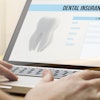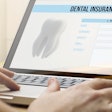Between dental charts, patient forms, treatment plans, and billing, the amount of paper used every day in a dental business really stacks up. Even with technological advancements and automated digital solutions, the idea of a completely paper-free dental practice still seems a long way off.
 Mat Buttrey.
Mat Buttrey.
But with clients increasingly expecting online options for onboarding, payments, and treatment planning, now is the time to start thinking about ways to digitize your processes. And when you consider that each piece of paper in your office requires printing, scanning, and manual data entry, the efficiency gains associated with automated digital solutions can result in significant time and cost benefits.
Cloud-based solutions also offer greater security than physical records, which can be more easily lost or stolen -- and you don't have to be worried about finding secure storage space.
Most importantly, there is the environmental impact of paper: If the average U.S. office worker uses about 10,000 sheets of paper a year, it is the equivalent of a standard pine tree. Or to put it another way, each ream of 500 sheets is about 5% of a tree, so any paper you can save means more trees in the ground.
Think 'less paper,' not paperless
If the thought of ditching paper altogether seems overwhelming, fear not! Realistically, paper is going to be around for a long time, and there are plenty of cases that require physical documents. For example, older patients may find it challenging to fill out forms on a tablet, so you'll still want to have the trusty clipboard as an alternative option.
By trying to eliminate paper completely, you may be setting you and your team up for failure. The key is to aim for a more achievable goal: reducing the amount of paper in your dental practice. So instead of going paperless, think about where you can implement digital records and processes to use less paper, with small incremental changes that all add up to an enormous impact over time.
Creating the digital dental office
You can start by looking at your current paper-based workflows and identifying the reasons for their use, whether it's a lack of software, third-party constraints, or simply a matter of habit. Here are some common areas that are typically reliant on paper in a dental clinic:
Onboarding new clients
When patients join a dental practice, they must complete a form, providing their personal details, health history, and consent for treatment. For 8 in 10 medical practices, this process still involves being handed a clipboard, pen, and paper in the waiting room, according to a recent study.
However, the survey findings also showed that almost half of patients were more likely to give a medical provider a favorable rating if they offered online forms, and 83% would like to fill these out before arriving for their appointment. In fact, 3 in 4 patients would choose a medical provider who offered online forms over one who didn't, indicating a clear preference for digital processes.
This is because a paperless system has the advantage of significantly reducing wait times at the dental practice, with patients providing the necessary information in advance. What's more, digital onboarding is crucial for operational efficiency and accuracy, eliminating time-consuming manual data entry and reducing the possibility of human error.
Invoicing and digital billing
While some insurance companies still require paperwork to be printed out and submitted manually, many invoicing and billing processes can now be digitized. Using modern software, your dental practice can provide fast and convenient online payment options as part of a secure booking system, with statements sent to patients via email, text, or an app.
Integration with practice management systems enables you to manage all your billing and accounts receivable in one place, automatically capturing an invoice in digital form to reduce time and manual effort. This also saves the paper involved in printing, scanning, and forwarding an invoice for approvals. Digitization also helps with accurate spending forecasts and a faster, simpler audit process, leading to smoother back-office operations, even in large organizations.
Appointment reminders
There's nothing more frustrating for dental practice than patients not showing up for their appointments. It is also expensive: Even one no-show a day can cost a practice between $20,000 to $70,000 a year.
But in the digital age, you can't assume that people are checking their mailboxes every day. If you're still posting paper appointment reminders, they risk not being received. On the other hand, research has shown that 100% of text messages are viewed, so there is a much higher likelihood of your patients seeing reminders that are sent by SMS or email.
Paperless solutions, like dental communication software, can send customized digital reminders to patients. Not only is this more cost-effective than mail, but they can be sent automatically, meaning you don't need to set reminders to send out reminders! You'll also be taking huge steps toward cutting your paper consumption while increasing efficiency and reducing no-shows.
Print management
It may sound counterintuitive but when it comes to saving paper, one of the best things you can do is focus on your print environment. For dental businesses, particularly large practices and dental service organizations with a vast printing fleet across multiple locations, print management software centralizes all your distributed printing, scanning, and faxing needs in a single place, no matter how many devices are in use.
A print management solution streamlines your print drivers and queues by dynamically adding local printers and removing distant ones for each user so that their print job is always sent to the closest printer. The staff member is then required to authenticate themselves at the device before the documents are released.
This secure release functionality serves two purposes: First, it ensures security by preventing the document, which may contain sensitive health or financial information, from falling into the wrong hands. Second, with a huge amount of paper waste caused by unwanted or duplicated printing, it also means that the print job won't start unless the person is physically present to pick it up, saving on paper.
For the modern dental business, transitioning to a digital environment can enhance efficiency and security, deliver time and cost savings, and attract more clients. While a paperless practice may still be a dream, reducing your paper use is good for your dental business and great for the planet. Now there's a reason to smile.
Mat Buttrey set up PaperCut Software's healthcare team in 2019 and continues to champion the innovation around printing, scanning, and faxing within the healthcare world.
The comments and observations expressed herein do not necessarily reflect the opinions of DrBicuspid.com, nor should they be construed as an endorsement or admonishment of any particular idea, vendor, or organization.



















